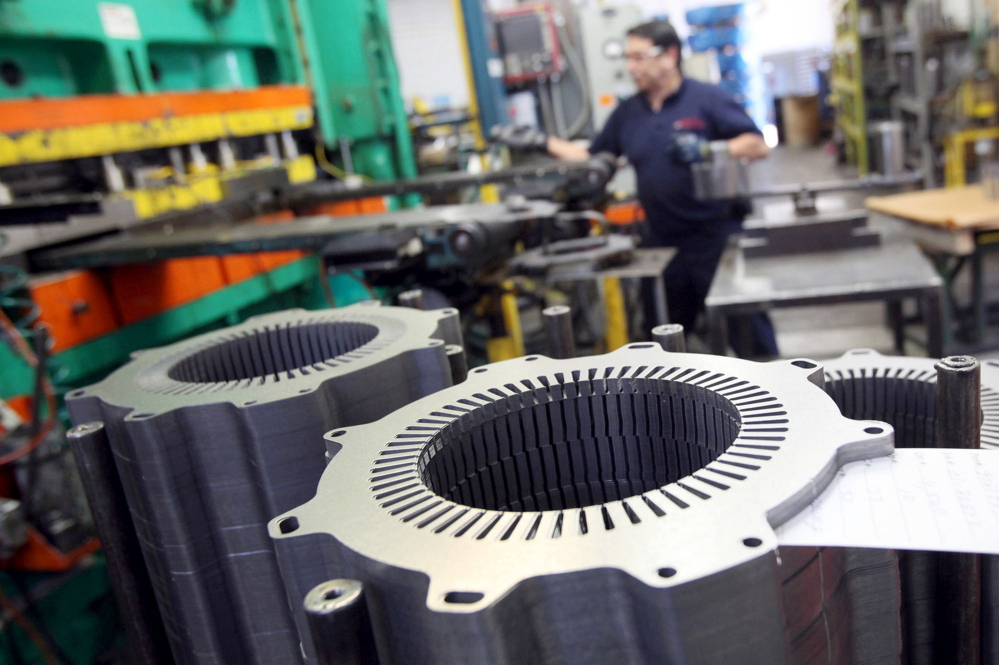WASHINGTON — Employers in March added the fewest workers since December 2013 and the jobless rate held at 5.5 percent as companies sought to bring U.S. headcounts in line with an economy that throttled back at the start of the year.
The 126,000 increase was weaker than the most pessimistic forecast in a Bloomberg survey and followed a 264,000 gain a month earlier that was smaller than initially reported, the Labor Department in Washington said. The median forecast in a Bloomberg survey of economists called for a 245,000 advance. Average hourly earnings rose 2.1 percent from a year earlier.
Companies tempered the pace of the hiring as rough winter weather, tepid overseas markets and a slowdown in energy-related capital investment combined to sting the economy. Even with the moderation in March payrolls, persistent employment opportunities are keeping Americans upbeat and laying the groundwork for a rebound in spending.
“There’s really no way to sugarcoat this: This is a soft print all the way around, no matter how you slice it,” said Omair Sharif, rates sales strategist at Newedge USA in New York. “It seems that it’s corroborating that the U.S. definitely hit a soft patch in the first quarter.
“Hiring just took a breather in the month of March. I wouldn’t read this as anything other than that. We should get back on track in the second quarter,” he said.
The smaller advance in employment broke a year-long string of monthly gains exceeding 200,000, which was the longest such stretch since 1995.
Payroll estimates of 98 economists in the Bloomberg survey ranged from gains of 179,000 to 300,000 after a previously reported 295,000 advance. Revisions to prior reports subtracted a total of 69,000 jobs to overall payrolls in the previous two months.
The slowdown in employment was broad-based. Goods producers, including factories, construction firms and the industries that support oil and gas well drilling, cut jobs last month. Manufacturing payrolls dropped for the first time since July 2013 and employment in the leisure and hospitality industries was the weakest since September that same year.
The unemployment rate, which is derived from a separate Labor Department survey of households, matched the Bloomberg survey median. The participation rate, which indicates the share of the working-age people in the labor force, decreased to 62.7 percent, matching the lowest since 1978.
Average hourly earnings rose by 0.3 percent from the prior month, to $24.86. The gain from a year earlier was in line with the average since the expansion began in June 2009.
Employment dropped by 1,000 in both manufacturing and construction. Payrolls in mining and logging, which includes oil and extraction and services, declined by 11,000 in March for a second month.
Lesma Weir, 41, is among those struggling to find work. She moved to Dallas last year to start a new job as an accountant. Just as she moved, the prospective employer decided to cut staff and her position disappeared.
“I can’t see the recovery,” said Weir, who has a master’s degree in business administration, $60,000 in student loans and a 17-year-old son with special needs. “We were told: ‘You need to get your education.’ I did that. I sacrificed. And now I’m just begging the world: ‘Just give me a job.'”
The March employment report follows a spate of data showing the economy has been cooling. Consumer spending barely rose in February after declining a month earlier, hampered in part by inclement winter weather in parts of the country.
Copy the Story LinkSend questions/comments to the editors.



Success. Please wait for the page to reload. If the page does not reload within 5 seconds, please refresh the page.
Enter your email and password to access comments.
Hi, to comment on stories you must . This profile is in addition to your subscription and website login.
Already have a commenting profile? .
Invalid username/password.
Please check your email to confirm and complete your registration.
Only subscribers are eligible to post comments. Please subscribe or login first for digital access. Here’s why.
Use the form below to reset your password. When you've submitted your account email, we will send an email with a reset code.